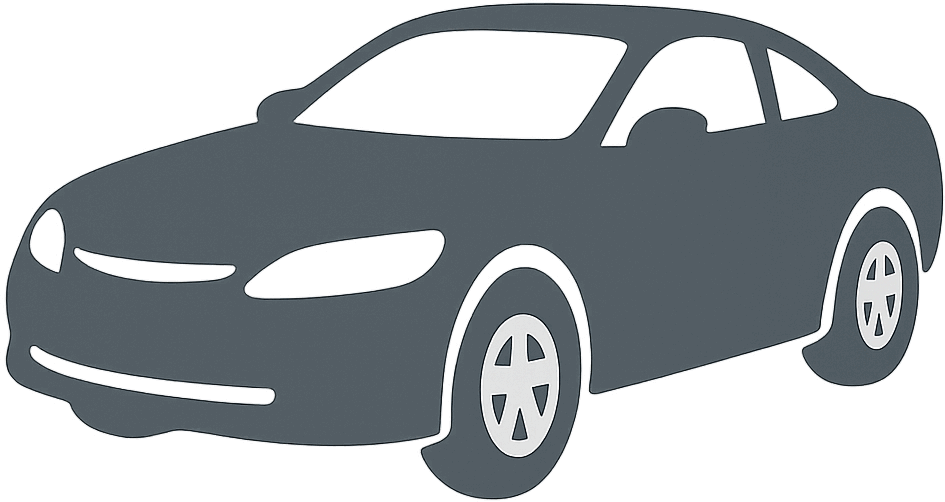 1981 Maserati Biturbo Coupe Dimensions, Size & Specs
1981 Maserati Biturbo Coupe Dimensions, Size & Specs
The Maserati Biturbo Coupe, produced from 1981 to 1988, is a notable example of Italian automotive design blending luxury and performance in a compact coupe format. Introduced as Maserati's first production car equipped with a twin-turbocharged engine, the Biturbo Coupe delivered an innovative combination of sporty character and daily usability. Although exact dimensions may vary slightly by model year and specification, the Biturbo Coupe typically featured a length of approximately 4,300 mm (169.3 inches), a width around 1,700 mm (66.9 inches), and a height near 1,280 mm (50.4 inches), representing a compact footprint for a luxury coupe of its era. Weighing roughly 1,300 to 1,350 kg (2,866 to 2,976 lbs), the car offered a relatively lightweight structure enabling agile handling and responsiveness. The Biturbo's design emphasized a low and sleek profile, with sharp lines and classic Maserati styling cues, including the iconic trident badge on its grille. Equipped with a turbocharged inline-4 engine, the coupe provided spirited performance that appealed to enthusiasts seeking Italian flair coupled with technological advancement. The Maserati Biturbo Coupe remains a significant vehicle in Maserati's history, reflecting a pioneering approach in the early 1980s toward turbocharging and compact luxury sports cars. Its unique size and weight make it an interesting comparison point within the coupe segment, bridging the gap between traditional grand tourers and emerging sportscar trends of its time.
Discover the standout features that make the 1981 Maserati Biturbo Coupe a leader in its class
Have a question? Please check our knowledgebase first.
The Maserati Biturbo Coupe produced between 1981 and 1988 is known for its compact yet sporty proportions. It measures approximately 4,260 mm (167.7 inches) in length, 1,720 mm (67.7 inches) in width, and has a height of around 1,280 mm (50.4 inches). These dimensions contribute to its classic coupe silhouette, providing a sleek appearance along with a relatively lightweight frame for enhanced performance and agility on the road.
The Maserati Biturbo Coupe typically weighs around 1,380 kilograms (approximately 3,042 pounds). This curb weight reflects the materials and technology of its era, balancing structural rigidity and sporty handling. The weight plays a role in the Biturbo's driving dynamics by offering a solid feel on the road while maintaining a nimble character expected from a luxury Italian coupe.
The Maserati Biturbo Coupe is designed as a classic 2+2 coupe, meaning it seats four passengers, with two front seats and two smaller rear seats suitable for adults or children on shorter trips. The interior space emphasizes sportiness and driver focus, with enough legroom and headroom in the front to provide comfort. However, rear passenger space is more limited, reflecting the vehicle's coupe nature and focus on style rather than spaciousness.
Yes, the Maserati Biturbo Coupe fits comfortably into a standard residential garage. Standard garage dimensions in many regions typically allow vehicles up to about 2,500 mm (98 inches) in width and at least 5,000 mm (197 inches) in length, which is well above the Biturbo’s 1,720 mm (67.7 inches) width and 4,260 mm (167.7 inches) length. Its compact footprint ensures easy parking and maneuverability within typical garage spaces.
The Maserati Biturbo Coupe introduced a more compact and affordable alternative compared to previous Maserati coupes like the Indy and Mexico, which were longer and wider. For example, the Maserati Indy (produced 1969-1975) was about 4,758 mm (187.3 inches) long and 1,850 mm (72.8 inches) wide, significantly larger than the Biturbo. The Biturbo’s smaller size contributed to better urban drivability and a sportier feel, aligning with its sport-luxury positioning.
When compared to contemporaries like the BMW 6 Series E24 or the Porsche 944, the Maserati Biturbo Coupe is somewhat smaller and lighter. For instance, the BMW 6 Series was about 4,750 mm (187 inches) long, wider, and heavier, reflecting a grand touring focus. The Biturbo’s relatively compact dimensions made it more agile and suited to city driving, while still providing luxury and impressive performance credentials in the context of 1980s sport coupes.
The Maserati Biturbo Coupe offers a reasonably sized trunk space for a luxury coupe of its class and era, typically around 280 to 300 liters (approximately 9.9 to 10.6 cubic feet). This trunk size allows for practical luggage storage for weekend trips or daily use, though it is more limited compared to larger saloons or grand tourers. The compact rear design and coupe styling prioritize form and driving dynamics over large storage volume.
The Maserati Biturbo Coupe comes equipped with a fuel tank capacity of approximately 80 liters (21.1 US gallons). This size allows for a decent driving range, balancing the car's performance-oriented twin-turbocharged V6 engine with the need for relatively frequent refueling on longer drives. The fuel capacity helps ensure that drivers can enjoy spirited driving without excessive stops.
Maserati’s design goals for the Biturbo Coupe focused on creating a smaller, more affordable sports coupe that retained the brand's luxury and performance cachet. The dimensions were intentionally compact to improve maneuverability and urban usability, while still offering the elegance and sporty presence expected from Maserati. The relatively low height, moderate width, and overall length contributed to a sleek, aerodynamic shape that emphasized a modern Italian coupe style.
Inside the Maserati Biturbo Coupe, the seating arrangement was designed for a 2+2 layout, with front bucket seats offering good lateral support typical for sports cars of the time. The seats were upholstered in high-quality materials reflecting luxury craftsmanship. The ergonomics prioritized driver engagement, placing controls within easy reach and emphasizing a cockpit feeling. Rear seats were smaller, best suited for occasional use or shorter trips, consistent with the coupe’s sporty character.
